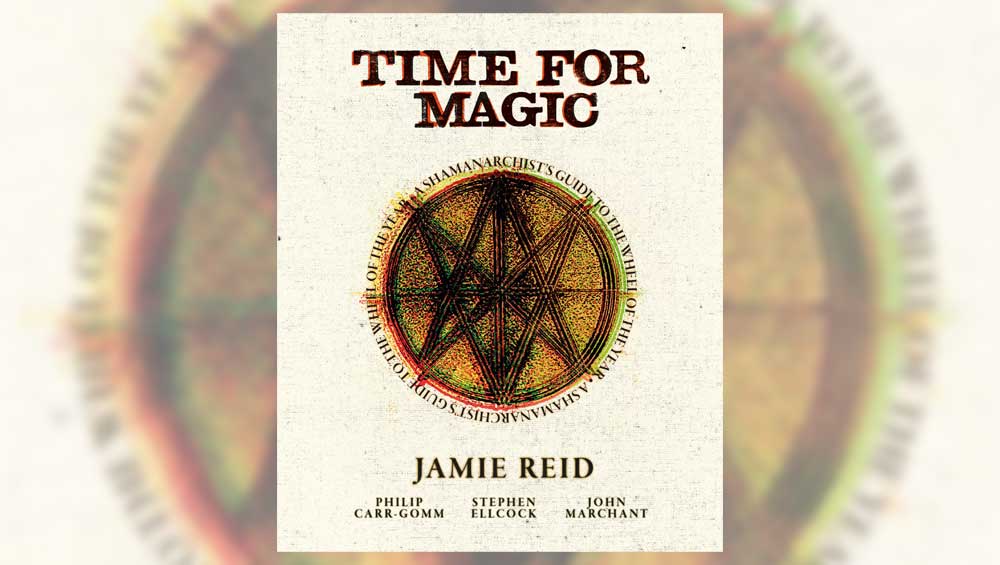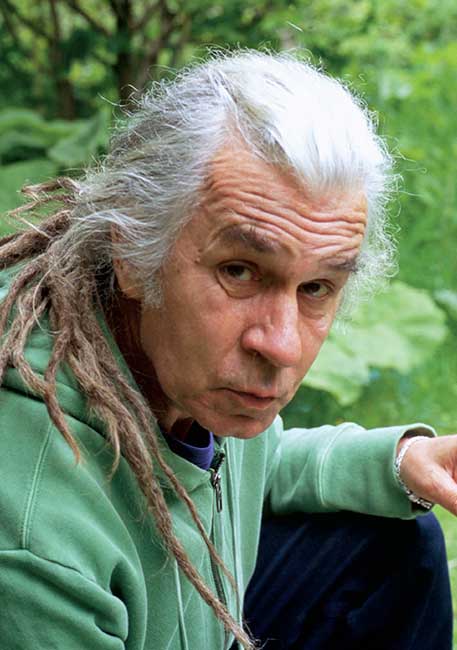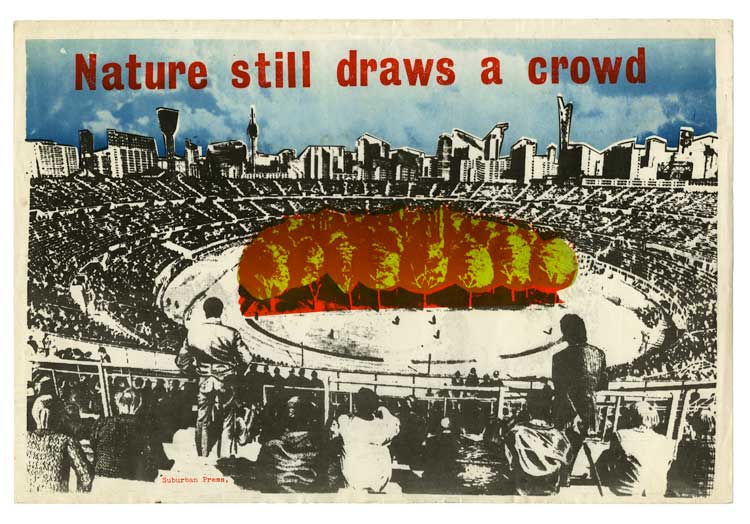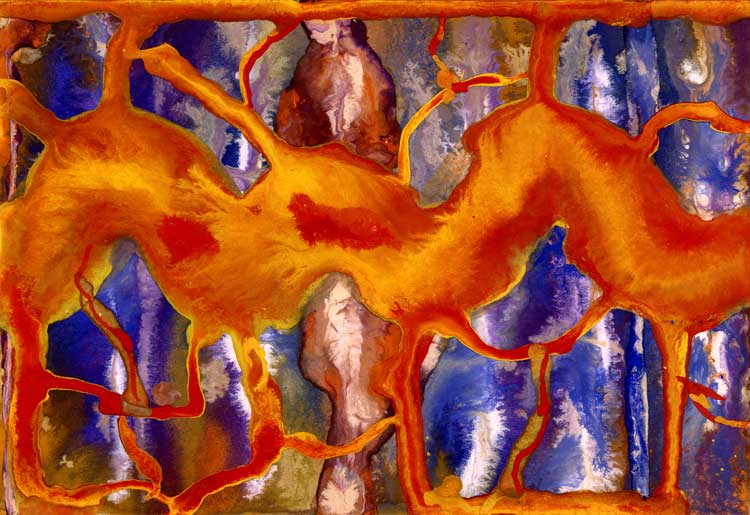
Time for Magic : A Shamanarchist’s Guide to the Wheel of the Year, by Jamie Reid, Stephen Ellcock, Philip Carr-Gomm and John Marchant, published by Watkins.
reviewed by CHRISTIANA SPENS
Jamie Reid (1947–2023) was a radical, daring and joyful artist, engaging in society with an infectious desire to transform it for the better. While best known for his work for the Sex Pistols and Suburban Press, Reid developed his practice across many genres, from music to publishing and performance, and won a cult following as one of the great English iconoclastic artists and cultural figures of the last 50 years. An anarchist with a deep fascination and commitment to Druidry, towards the end of his life he also worked with Extinction Rebellion, Pussy Riot, Occupy London and Just Stop Oil, fusing art and activism in a unique and often spectacular way.

Jamie Reid (photograph copyright John Marchant, 2024). Image courtesy Watkins.
A year on from Reid’s death, curator Stephen Ellcock, author and former chief druid Philip Carr-Gomm and Reid’s gallerist John Marchant, have put together Time for Magic: A Shamanarchist’s Guide to the Wheel of the Year, an entrancing tribute to the artist, which is also a survey of his life’s work, explaining the ways in which his art practice intersected with Druid practice and political activism as well as pop culture. Inventively structured around the eight seasonal festivals of the Wheel of the Year – the equinoxes and solstices plus Imbolc, Beltane, Lughnasadh and Samhain – which were so crucial to Reid’s life and art practice, Time for Magic presents more than 180 of Reid’s artworks, selected by Ellcock. From key Wheel of the Year artworks to famous earlier pieces, in particular the pre-punk, situationist-inspired agit-prop, and the work he produced for the Sex Pistols in the 1970s, this is an inventive and fascinating celebration of Reid’s work. It is also an immersive and joyful reading experience, thanks to its careful curation and details about the work itself.

Enough is Enough / Fuck Your Wars by Jamie Reid, 2019. Image courtesy Watkins.
What is particularly enjoyable is the way in which Ellcock, Marchant and Carr-Gomm’s contributions complement one another and give a real sense of the dynamic, multifaceted nature of Reid’s practice. There are also little details about how individual works were produced, which often give touching glimpses into his personality and life. Of 365 Eightfold Year Cards (c2010), Marchant says: “He would usually work on the floor, kneeling or lying on his side, mixing colours in dozens of plastic cups, the years of creativity layering his floor with paint spatters. As he worked, he would listen to his favourite jazz musicians, such as Charles Mingus or Alice Coltrane, or to the Test cricket.”
In the opening section of the book, Ellcock and Marchant discuss Reid’s life and legacy, giving context to the mischievous, iconoclastic and highly original body of work displayed throughout the volume. As Ellcock says: “A comprehensive retrospective of his work would give you the history of British counterculture of the last 55 years, from the art school strikes and situationism to punk, to the miners’ strikes and rave culture, to sacred-site access and environmentalism.” Part of his subversive power was to synchronise and riff on these cultural movements and all the people and creative work they produced, becoming a channel for the wisdom, desire and power of the people and ideas at their core. Marchant says: “He was part of the visionary tradition of radical dissent from Wat Tyler onwards, through people such as William Blake and Gerrard Winstanley. Jamie’s thing was never just visual; it was always about politically engaged language for the people.”

Nature Still Draws a Crowd by Jamie Reid, 1974. Image courtesy Watkins.
This visionary, political energy encompassed the punk movement to land rights activism; Reid fought for common access to sacred sites as part of the Access to Stones campaign, and focused on climate activism with Just Stop Oil. To explain the influence of Druidry on Reid’s art and activism, there are photographs of Druidic ceremonies held by his great-uncle, Chief Druid George Watson MacGregor Reid, as well as an essay by Carr-Gomm on the Wheel of the Year, its relationship to fighting the climate crisis, and how Reid sought to fuse art, activism and spirituality in his dynamic way.

6th October by Jamie Reid (untitled / dated). Image courtesy Watkins.
By combining these different strands of Reid’s life and work, Time for Magic gives a sense of his legacy as an artist, visionary and activist; it is a dazzling visual manifesto for a better world, and it is a reminder of art’s promise as a force of hope, idealism and community, delivered in a spirit of enchantment, love and invention. A welcome tonic to more cynical and commercial strands of art practice today, Reid’s work and the message that runs through it all is refreshing and profound, telling us that now, as ever, is a time for magic, that if we can just be brave and in touch with this enduring romantic spirit, a better world is possible.